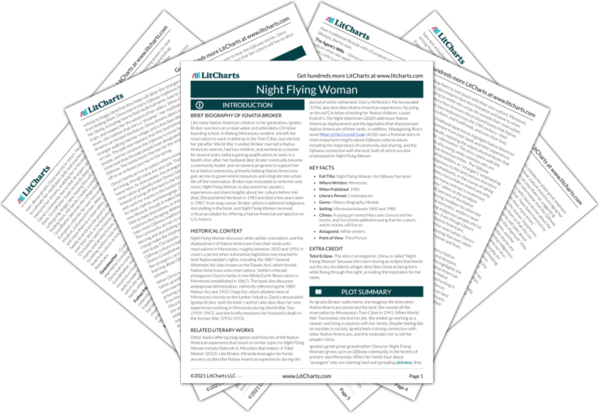AI ToolsNew
Tools to make learning and teaching easier
|
Previous
Summary
|
Night Flying Woman: Prologue: The Forest Cries Summary & Analysis |
Next
Ni-bo-wi-se-gwe
|


Upgrade to unlock the analysis and theme tracking for all of Night Flying WomanNight Flying Woman!
Get LitCharts A+